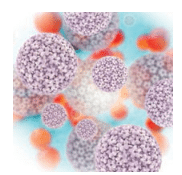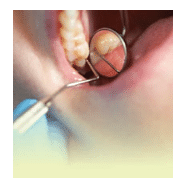 Topic: Association Between Vitamin D and Dental Caries
Topic: Association Between Vitamin D and Dental Caries
Published: Pediatrics
For more information: Schroth RJ, Lavelle C, Tate R, Bruce S, Billings RJ, Moffatt ME. Prenatal vitamin D and dental caries in infants. Pediatrics. April 21, 2014. Epub ahead of print.
Tooth enamel formation begins in the womb, and facets of maternal health can affect children’s dentition. Researchers at the University of Manitoba in Winnipeg, Canada, decided to investigate the relationship between low vitamin D levels in pregnant women and the prevalence of caries in their offspring during the first year of life. The study included 207 mothers of low socioeconomic status living in an urban area. Participants filled out prenatal questionnaires and blood tests were conducted to determine their vitamin D levels. Approximately one-third of the mothers had vitamin D deficiencies. The infants of the study participants received oral examinations before their first birthdays, during which it was found that 22% had enamel hypoplasia, 23% had cavitated early childhood caries (ECC), and 36% were diagnosed with ECC when white spot lesions were included in the evaluation. The mothers of the children with ECC had significantly lower levels of vitamin D than the mothers of children without tooth decay. The researchers, led by Robert J. Schroth, DMD, MSc, PhD, assert there is an association between maternal vitamin D levels and the development of ECC. Whether pregnant women should automatically take vitamin D supplements is controversial, but the study authors note that good nutrition in young children is a valuable strategy in preventing dental caries.
 Topic: Safety and Efficacy of Human Papillomavirus Vaccine
Topic: Safety and Efficacy of Human Papillomavirus Vaccine
Published: Clinical Infectious Diseases
For more information: Kojic EM, Kang M, Cespedes MS, et al. Immunogenicity and safety of a quadrivalent human papillomavirus vaccine in HIV-1-infected women. Clin Infect Dis. April 9, 2014. Epub ahead of print.
Women infected with the human immunodeficiency virus are at increased risk for human papillomavirus (HPV) due to their impaired immune function. In order to reduce this risk, researchers at Brown University in Providence, RI, looked at the efficacy of the quadrivalent HPV vaccine in this patient population. The study, led by Erna Milunka Kojic, MD, included 319 women between the ages of 13 and 45 with HIV in the United States, Brazil, and South Africa. The effects of the vaccine were studied on four strains of HPV: 6, 11, 16, and 18. The women received the vaccine at 8 weeks and 24 weeks with results evaluated at 28 weeks. The researchers found that the vaccine was effective and safe, producing a significant increase in antibody levels. The results support the recommendation made by the US Advisory Committee on Immunization Practices and the World Health Organization that all HIV-infected individuals should receive the HPV vaccine.
 Topic: Periodontitis and Leukocyte Adhesion Deficiency
Topic: Periodontitis and Leukocyte Adhesion Deficiency
Published: Science Translational Medicine
For more information: Moutsopoulos NM, Konkel J, Sarmadi M, et al. Defective neutrophil recruitment in leukocyte adhesion deficiency type I disease causes local Il-17-driven inflammatory bone loss. Sci Transl Med. 2014;6:229–240.
Leukocyte adhesion deficiency (LAD) is a rare disease that greatly increases the risk of microbial infections. Most common among individuals of Middle Eastern descent, LAD occurs in approximately one out of 100,000 births. Individuals with LAD often develop severe periodontitis that leads to tooth loss before adulthood is reached. This high prevalence of periodontitis among individuals with LAD was attributed to the inability of neutrophils to move from the bloodstream into the gingiva. George Hajishengallis, DDS, PhD, and a team from the University of Pennsylvania School of Dental Medicine in Philadelphia, debunked this theory during their investigation. Results of their study showed that even when patients with LAD were treated with antibiotics and effective plaque removal, their periodontitis continued unabated. Upon further research, the scientists found that patients with LAD had very high levels of a IL-17, a type of cytokine that encourages inflammation. The researchers suggest that the high bacteria numbers found in this patient population are caused by inflammation, which is stimulated by the body’s reaction to gingival bacteria—and not by a malfunction of the immune system itself. They assert that treatments targeting IL-17 will be most effective at treating perio dontal diseases in patients with LAD.
From Dimensions of Dental Hygiene. May 2014;12(5):16.

